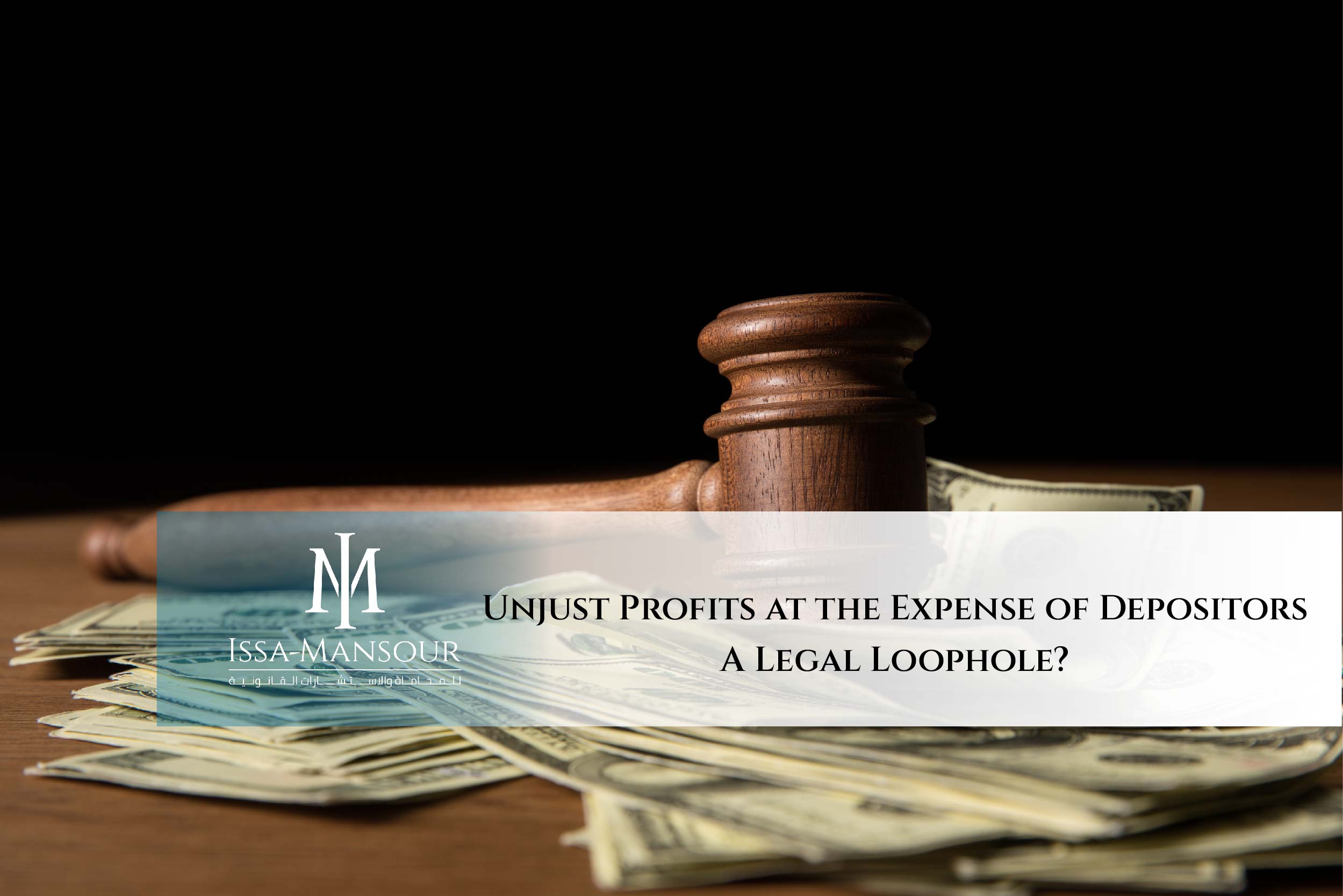Lebanon’s financial crisis and the rapid devaluation of the Lebanese pound have reshaped the banking landscape, leading to controversial legal and financial maneuvers. One of the most striking examples is how some borrowers, particularly traders who had taken out substantial loans in U.S. dollars, managed to settle their debts in Lebanese pounds at the rate designed by the Central Bank of 1,500 LBP per USD—despite the actual market rate soaring far beyond that.
Relying on specific legal provisions, such as Article 301 of the Law of Obligations and Contracts and Articles 1 and 7 of the Monetary and Credit Law, these borrowers leveraged legal interpretations and the widespread public frustration with the banking sector to justify their actions. While legally arguable at the time, the economic impact was severe.
Who Paid the Price?
While borrowers cleared their debts for a fraction of their actual value, thousands of depositors remained unable to access their own funds, as banks struggled with liquidity. Many early court rulings initially favored borrowers, acknowledging their payments as full debt settlement. However, appeals courts have since overturned many of these rulings, reopening the debate on fairness and financial responsibility.
A New Legal Proposal
Recent reports suggest that Lebanon’s Parliament is considering a law requiring borrowers who settled their debts this way to repay the difference—bringing their payments in line with actual market rates. This move aims to restore equity between banks, merchants, and depositors, recognizing that settling debts at a fraction of their true value could be seen as illicit enrichment.
The Debate Continues
Should borrowers who took advantage of this loophole be required to repay the difference? Would such a law truly restore fairness, or does it risk undermining legal stability?
الأرباح غير العادلة على حساب المودعين: ثغرة قانونية؟
أدت الأزمة المالية في لبنان والانهيار السريع لليرة اللبنانية إلى تغييرات جذرية في المشهد المصرفي، مما فتح الباب أمام مناورات قانونية ومالية مثيرة للجدل. ومن أبرز هذه الحالات استفادة بعض المقترضين، لا سيما التجار الذين حصلوا على قروض كبيرة بالدولار الأميركي، من سداد ديونهم بالليرة اللبنانية على أساس السعر المحدد من مصرف لبنان البالغ 1,500 ل.ل. لكل دولار، رغم أن السعر الفعلي في السوق كان أعلى بكثير
استغلال النصوص القانونية؟
استند هؤلاء المقترضون إلى بعض المواد القانونية، مثل المادة 301 من قانون الموجبات والعقود والمادتين 1 و7 من قانون النقد والتسليف، لتبرير سلوكهم، مستفيدين من الغضب الشعبي تجاه القطاع المصرفي. ورغم أن هذا التفسير القانوني كان قابلاً للنقاش في حينه، إلا أن التداعيات الاقتصادية كانت مدمّرة
من دفع الثمن؟
في الوقت الذي تمكن فيه المقترضون من تصفية ديونهم بجزء بسيط من قيمتها الحقيقية، بقي آلاف المودعين عاجزين عن الوصول إلى أموالهم، حيث كافحت المصارف لتوفير السيولة. ورغم أن بعض الأحكام القضائية المبكرة كانت تصبّ في مصلحة المقترضين، معتبرة أن هذه المدفوعات تمثل تسوية نهائية للديون، إلا أن محاكم الاستئناف قامت لاحقًا بنقض العديد من هذه الأحكام، ما أعاد الجدل حول العدالة والمسؤولية المالية
مشروع قانون جديد
تشير التقارير الأخيرة إلى أن البرلمان اللبناني يدرس مشروع قانون يُلزم المقترضين الذين استفادوا من هذه الثغرة بردّ الفارق بين قيمة الدين المسدّد وسعر الصرف الفعلي في السوق. ويهدف هذا التشريع إلى إعادة التوازن بين المصارف والتجار والمودعين، باعتبار أن تسديد الديون بجزء من قيمتها الحقيقية قد يشكّل إثراءً غير مشروع
الجدل مستمر
هل ينبغي إلزام هؤلاء المقترضين بإعادة الفارق؟ وهل يمكن لمثل هذا القانون أن يعيد العدالة، أم أنه قد يشكّل مساسًا باستقرار القوانين والمعاملات؟

